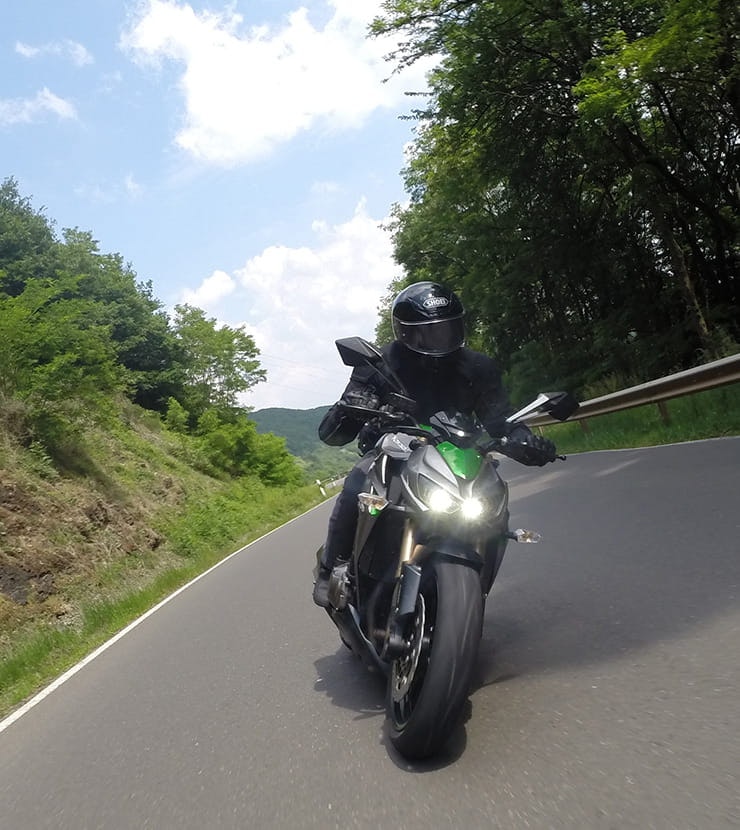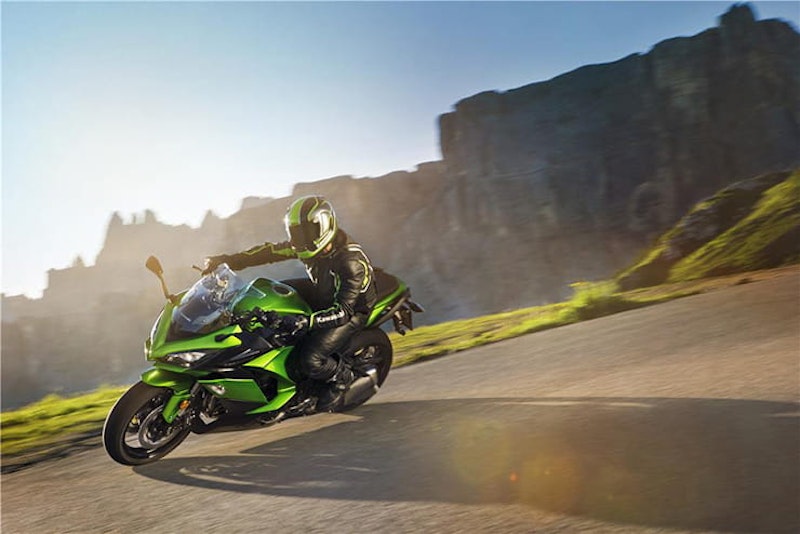The rarity: a smooth B-road. Most of the time you’ll have to factor in potential potholes on your chosen line
Top tips from Gary Baldwin, Director of hugely respected Rapid Training, professional crash investigator, and ex-racer. You can book a course with him at www.rapidtraining.co.uk or call 07429 042885
Is it just me or are B-roads difficult to ride smoothly?
It’s not just you, no. B-roads are the most challenging roads to ride well because the view can suddenly go from a mile down to 20m, you get lots of elevation change, some bits are well-signed and others aren’t, and of course there are lots of corners.
So they are actually more difficult to ride well than any other road?
Yes. By comparison, A-roads are easy because they’ve had so much money spent on them to engineer out the dangerous sections - on the whole they’re straighter, flatter and more boring. But an advantage of B-roads is you don’t have to ride at silly speeds to have fun. You can have a challenging ride at 60mph, whereas you’d have to be doing three figures on an A-road to get the same buzz. It’s inherently better for your licence.
He’s run a bit wide there. We’ll assume there’s no tractor entering stage left
What’s the technique for B-roads then?
On a B-road you’re aiming for flow - linking one corner to the next in a smooth sequence. Do that and the pace comes automatically. B-roads reward you if you set out to ride well, rather than setting out to ride fast.
Most common mistake?
It’s usually down to familiarity. Because we’re often on roads we know, we ride as we expect them to be rather than what we can see. We assume that as there wasn’t anything round this corner last week there won’t be anything today. Familiar roads can bring out the laziness in us, so we don’t look as hard as we should do. By contrast, if you’re riding a new B-road, your eyes will be out on stalks looking for hazards and you can end up riding much better that a local would.
Any other tips?
On these roads it’s an advantage to know your agriculture - farm vehicles are one of the most dangerous things you’re likely to encounter. They’re always moving slower than you think, they always seem to position themselves round blind bends and they have a habit of turning right into fields. As a crash investigator I see quite a lot of problems with people over-taking tractors because whichever way an agricultural vehicle is turning, it always turns right first - they need the whole road. When you’re thinking about over-taking, if you’re in any doubt, hold back. It staggers me how often motorcyclists seem to find themselves alongside farm vehicles during the couple of seconds they’re turning right.
Group riding on B-roads adds another layer of complexity…
How do I avoid tractor interactions?
With good observation, tractors shouldn’t surprise you. Most have a flashing light on and you can see the rubbish they leave all over the road - that’s a valuable clue as to where they go in and out of entrances. Also they tend to come out most at predictable times of year. If you pick up the clues you just have to dial in a bit of extra safety room in.
Any other things to watch?
One of the other worries at the moment is road surface. Round my way there are some enormous, deep potholes and they need to be in your riding plan - you’ve can’t commit yourself to a line until you can see it. We’ve also had problems with polished surfaces in the summer, which can dramatically reduce grip.
Cornering lines
We join Rapid Training and Suzuki for tips on planning the perfect line through any corner, no matter how complex.

